Related Research Articles

The National Collegiate Athletic Association (NCAA) is a nonprofit organization that regulates student athletics among about 1,100 schools in the United States, and one in Canada. It also organizes the athletic programs of colleges and helps over 500,000 college student athletes who compete annually in college sports. The organization is headquartered in Indianapolis, Indiana.

The North Central Conference (NCC), also known as North Central Intercollegiate Athletic Conference, was a college athletic conference which operated in the north central United States. It participated in the NCAA's Division II.
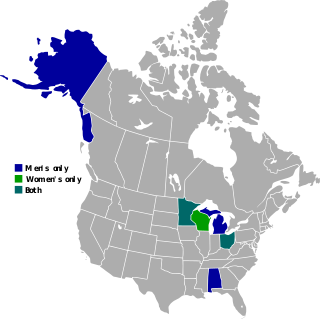
The Western Collegiate Hockey Association (WCHA) is a college ice hockey conference which operates in the Midwestern United States. It participates in the NCAA's Division I as a women's-only conference.

The U Sports Men's Ice Hockey Championship, is a Canadian university ice hockey tournament conducted by U Sports, and determines the men's national champion. The tournament involves the champions from each of Canada's four regional sports conferences. The David Johnston University Cup is awarded to the winners.

NCAA Division I (D-I) is the highest level of intercollegiate athletics sanctioned by the National Collegiate Athletic Association (NCAA) in the United States, which accepts players globally. D-I schools include the major collegiate athletic powers, with large budgets, more elaborate facilities and more athletic scholarships than Divisions II and III as well as many smaller schools committed to the highest level of intercollegiate competition.

College basketball is basketball that is played by teams of amateur student-athletes at universities and colleges. In the United States, colleges and universities are governed by collegiate athletic bodies, including the National Collegiate Athletic Association (NCAA), the National Association of Intercollegiate Athletics (NAIA), the United States Collegiate Athletic Association (USCAA), the National Junior College Athletic Association (NJCAA), and the National Christian College Athletic Association (NCCAA). Each of these various organizations is subdivided into one to three divisions, based on the number and level of scholarships that may be provided to the athletes. Teams with more talent tend to win over teams with less talent.
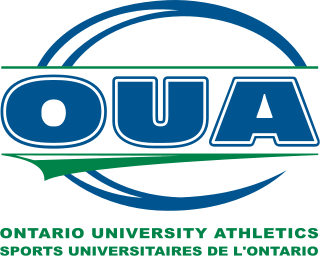
Ontario University Athletics is a regional membership association for Canadian universities which assists in co-ordinating competition between their university level athletic programs and providing contact information, schedules, results, and releases about those programs and events to the public and the media. This is similar to what would be called a college athletic conference in the United States. OUA, which covers Ontario, is one of four such bodies that are members of the country's governing body for university athletics, U Sports. The other three regional associations coordinating university-level sports in Canada are Atlantic University Sport (AUS), the Canada West Universities Athletic Association (CW), and Réseau du sport étudiant du Québec (RSEQ).
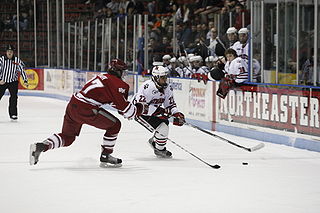
College ice hockey is played principally in the United States and Canada, though leagues exist outside North America.
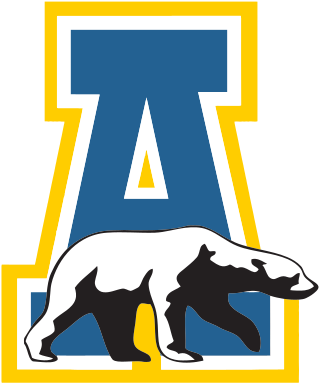
The Alaska Nanooks are the intercollegiate athletics teams that represent the University of Alaska Fairbanks. The Nanooks name is derived from the Inupiaq "nanuq", meaning polar bear. The school colors are blue and gold. The Nanooks compete at the NCAA Division II level for all sports except men's ice hockey. The majority of Nanooks sports are members of the Great Northwest Athletic Conference (GNAC), the hockey team is an Independent and plays at the 4,595-seat Carlson Center located west of downtown Fairbanks, while the women's swim team is a member of the Pacific Collegiate Swimming and Diving Conference (PCSC), the men's and women's skiing teams are members of the Rocky Mountain Intercollegiate Ski Association (RMISA), and the rifle team competes as a member of the Patriot Rifle Conference.
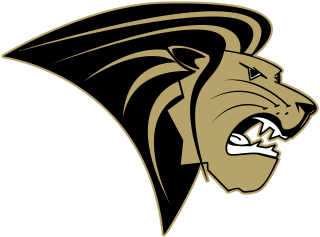
The Lindenwood Lions and Lady Lions are the intercollegiate athletic teams that represent Lindenwood University, located in St. Charles, Missouri, in intercollegiate sports as a member of the NCAA Division I ranks, primarily competing in the Ohio Valley Conference for most of its sports since the 2022–23 academic year.

The Michigan Wolverines men's ice hockey team is the college ice hockey team that represents the University of Michigan in Ann Arbor, Michigan. Earning varsity status in 1922, the program has competed in 102 seasons. Between 1959 and 1981, the team competed in the Western Collegiate Hockey Association (WCHA) before joining the Central Collegiate Hockey Association (CCHA) until the 2012–13 season. Since the 2013–14 season, the Wolverines have competed in the Big Ten, which began sponsoring hockey.

The Ferris State Bulldogs are the athletic teams that represent Ferris State University, located in Big Rapids, Michigan, in NCAA Division II intercollegiate sporting competitions. The Bulldogs compete as members of the Great Lakes Intercollegiate Athletic Conference for 14 of 15 varsity sports, while the men's hockey team plays in the Central Collegiate Hockey Association. The Bulldogs have been members of the GLIAC since 1972.

U Sports men's ice hockey is the highest level of play of men's ice hockey at the university level and operates under the auspices of U Sports, Canada's governing body for university sports. As of the 2018 season, 48 teams from Canadian universities are divided into three athletic conferences, drawing from three regional associations of U Sports: Canada West Universities Athletic Association, Ontario University Athletics, and Atlantic University Sport. At the end of every season, eight teams compete for the David Johnston University Cup, awarded to the U Sports Men's Hockey Championship team.

U Sports women's volleyball is the highest level of amateur play of indoor volleyball in Canada and operates under the auspices of U Sports. 43 teams from Canadian universities are divided into four athletic conferences, drawing from the four regional associations of U Sports: Canada West Universities Athletic Association (CW), Ontario University Athletics (OUA), Réseau du sport étudiant du Québec (RSEQ), and Atlantic University Sport (AUS). Following intra-conference playoffs, eight teams are selected to play in a national tournament to compete for the U Sports women's volleyball championship.
The Quebec–Ontario Athletic Association ice hockey tournament was an annual conference championship held between member teams.
The Ontario Intercollegiate Athletic Association ice hockey tournament was an annual conference championship held between member teams.
The Western Canadian Intercollegiate Athletic Union ice hockey tournament was an annual conference championship held between member teams.
The Great Plains Athletic Conference men's ice hockey tournament was an annual conference championship held between member teams.
The Canada West men's ice hockey tournament is an annual conference championship held between member teams. The tournament champion received an automatic bid to participate in the University Cup tournament.
References
Canada West Men's Hockey History
- ↑ "History of Canada West". Canada West. Retrieved October 10, 2024.
